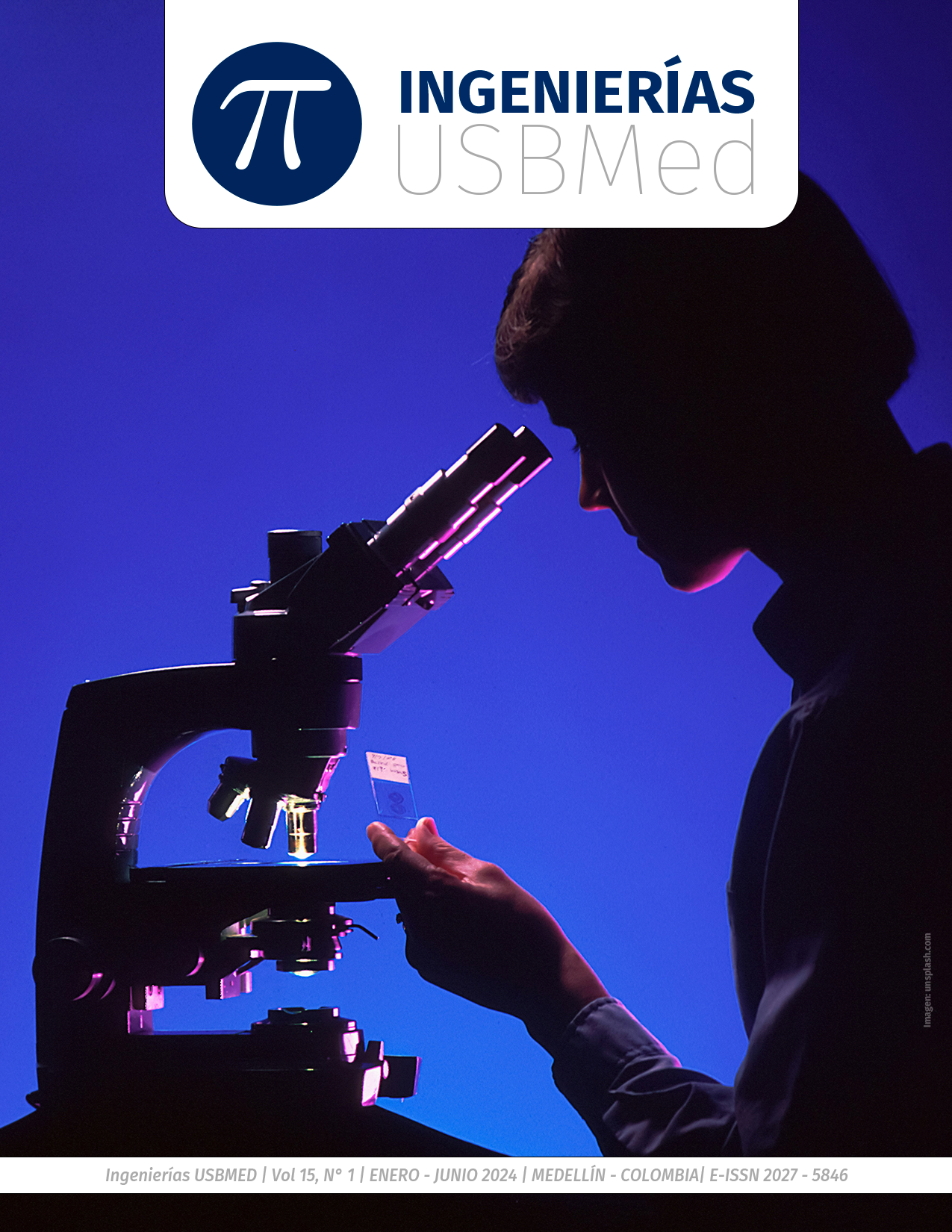This journal provides immediately free access to its contents under the principle that make available the research results for free to the public, helps for a greater global exchange of knowledge.
Therefore, the journal invokes the Creative Commons 4.0
License attributions: Recognition – Non-commertial - Share equal. Commercial use and distribution of original or derivative works are not permitted and must be done with a equal license as the one that regulate the original work.
Abstract
The objective of this study was focused on carrying out an analysis on the main contributions of additive manufacturing in dental pieces and the benefits of this procedure in dentistry, as well as establishing the advantages and limitations that this modality entails. The research was based on a systematic review with adaptability to Prisma and Tranfield methodology, through which the impact of additive manufacturing in dental clinics and in the various clients who acquire the pieces in terms of taste and adherence to product, likewise, in terms of contribution to knowledge, the study remains as a precedent for other investigations that are carried out later on this topic. Articles published in the last five years from the Scopus and Web of Science databases were reviewed. The process was developed through inclusion and exclusion criteria, wherein its final instance the material criteria, type of printing, and post-processing were reviewed, to which a final filter was made that yielded the articles for review of the literature. This project contributes to the knowledge of the processes that are carried out in additive manufacturing in dental pieces, the advantages and disadvantages, thus leaving a precedent for the adherence of dental clinics to this method.
References
[2] C. Zaharia, A. G. Gabor, A. Gavrilovici, A. T. Stan, L. Idorasi y C. Sinescu, «Digital Dentistry - 3D Printing Applications,» J Interdiscip Med, vol. 2, nº 1, pp. 1-3, 2017.
[3] A. Kessler, R. Hickel y M. Reymus, «3D printing in dentistry-state of the art,» Oper Dent, vol. 45, nº 1, pp. 30-40, 2020.
[4] H. Dodziuk, «Applications of 3D printing in healthcare,» Kardiochirurgia i Torakochirurgia Pol, vol. 13, nº 3, pp. 83-93, 2016.
[5] R. Christoph, R. Muñoz y A. Hernández, «Manufactura Aditiva,» Realidad Reflexión, nº 43, pp. 97-109, 2016.
[6] A. Bhargav, J. Sanjairaj, V. Rosa, L. W. Feng y Y. H. Fuh, «Applications of additive manufacturing in dentistry: A review,» Biomed Mater Res - Part B Appl Biomater, vol. 106, nº 5, pp. 58-64, 2018.
[7] A. E. Fragoso, Desarrollo de un proceso de manufactura aditiva 3D para aplicación de metales. Tesis de grado, México: Universidad Nacional Autónoma de México, 2018.
[8] R. D. Sandoval, Aprendizajes, retos y perspectivas de la fabricación digital en Colombia, Medellín: Universi-dad Nacional de Colombia, 2016.
[9] A. Pernía, J. Blanco, J. M. Sierra, J. C. Azofra y F. J. Martínez, Práctica de mecanizado en torno y fresadora, Logroño: Universidad de la Rioja, 2018.
[10] Interempresas.net, «La fabricación aditiva en la tecnología sanitaria,» Canales sectoriales Interempresas, 2020.
[11] A. Dawood, B. M. Marti y V. Sauret-Jackson, «3D printing in dentistry,» Br Dent J., vol. 19, nº 11, pp. 521-529, 2015.
[12] A. M. Salazar, Propuesta de planeación estratégica para el Laboratorio Dental Grajales, Bogotá D.C.: Univer-sidad Agustiniana, 2018.
[13] Owandy radiology, «La impresión 3D en odontología,» 2020.
[14] M. Zahera, «La fabricación aditiva, tecnología avanzada para el diseño y desarrollo de productos,» Fundación Cotec, pp. 2088-2098, 2012.
[15] D. Torreblanca, «Tecnologías de Fabricación Digital Aditiva, ventajas para la construcción de modelos, proto-tipos y series cortas en el proceso de diseño de productos,» Iconofacto, vol. 12, nº 18, pp. 118-143, 2016.
[16] A. M. González y A. Quenard, Impresión aditiva de implantes metálicos. Selección y caracterización de mate-rial de impresión, Córdoba: Universidad Nacional de Córdoba, 2018.
[17] I. Velasco, H. Ramos y S. Vahdani, «Manejo quirúrgico de tumor mandibular asistido con la tecnología de im-presión tridimensional: nota técnica y reporte de caso,» Revista Chilena de Cirugia, vol. 69, nº 4, pp. 332-340, 2017.
[18] I. García, L. Oliveira, C. Mendes, F. Igai y P. Neto, «Uso de un jig de verificación para determinar la posición de los implantes dentales en modelos impresos en 3D,» Odontología, pp. 39-50, 2019.
[19] G. Gómez, Proyecto de diseño de una prótesis a partir de fabricación aditiva (impresión 3D). Memoria, Cata-lunya: Universitat Politécnica de Catalunya, 2019.
[20] J. A. Velásquez, «Procesos de manufactura con tecnología 3D,» CTScafe, vol. 3, nº 7, pp. 39-49, 2019.
[21] K. T. Ulrich y S. D. Eppinger, Diseño y desarrollo de productos, México: Mc Graw Hill, 2009.
[22] G. M. Boizas, Introducción a la fabricación aditiva, 2018.
[23] P. Gutiérrez, G. Rivera, E. Treviño, A. Rodríguez, P. Leal y J. Álvarez, «Botiquín para el manejo de urgencias médicas en el consultorio dental,» Rev. La Asociación Dental, vol. 69, nº 5, pp. 214-217, 2012.
[24] G. Oberoi, S. Nitsch, M. Edelmayer, K. Janjic, A. S. Muller y H. Agis, «3D printing-Encompassing the facets of dentistry,» Front Bioeng Biotechnol, vol. 6, pp. 1-13, 2018.
[25] D. Thomas, «Costs, benefits, and adoption of additive manufacturing: a supply chain perspective,» Int. J. Adv. Manuf. Technol, nº 85, pp. 1857-1876, 2016.
[26] J. Núñez, J. González, M. A. Jiménez y A. Ortíz, «Análisis de las actividades logísticas en la cadena de sumi-nistro afectadas por la manufactura aditiva: una revisión y análisis biblométrico,» Universidad Pontificia Boliva-riana, 2017.
[27] J. Nuñez, A. Ortíz, M. A. Jiménez, J. A. González y M. Luzardo, «Fabricación aditiva y cadena de suministro: revisión y análisis bibliométrico,» Ingeniería transformación digital, pp. 323-331, 2018.
[28] Blender for Dental, «Como invertir en CAD CAM,» [En línea]. Available: https://www.youtube.com/watch?v=Hu1dmHyw8aU.
[29] G. Urrútia y X. Bonfill, «Declaración PRISMA: una propuesta para mejorar la publicación de revisiones siste-máticas y metaánalisis,» Medicina clínica, vol. 135, nº 11, pp. 507-511, 2010.
[30] M. A. Espinosa, E. Romero, L. y. Flórez y C. D. Guerrero, «Propuesta metodológica para recopilación y análisis de información de artículos científicos. Un enfoque desde la bibliometria y la revisión sistemática de la literatura,» Risti, pp. 110-122, 2020.
[31] V. Hernádez González, N. Sans Rosell, M. C. Jové Deltell y J. Reverter Masia, «Comparación entre Web of Science y Scopus, Estudio Bibliométrico de las Revistas de Anatomía y Morfología,» International Journal of Morphology, pp. 1369-1377, 2016.
[32] Fundación española para la ciencia y la tecnología, «Fecty,» s/f. [En línea]. Available: https://www.recursoscientificos.fecyt.es/licencias/productos-contratados/wos.
[33] Web of Science, «Quick Reference Guide,» Thomson Reuters, s/f.
[34] SCOPUS, «Funcionalidades avanzadas en Scopus,» ELSEVIER, 2018.
[35] ELSEVIER, «elsevier.com,» s/f. [En línea]. Available: https://www.elsevier.com/es-es/solutions/scopus.
[36] A. Aguilera y G. F. Romo, «Resinas en odontología estética,» CienciAcierta, pp. 1-4, 2017.
[37] Tecnología de Odontología, «polímeros dentales,» s/f.
[38] M. S. Acurio, Estabilidad dimensional entre Yeso tipo IV resinoso y Yeso tipo IV no resinoso, Quito: Universi-dad Central del Ecuador, 2018.
[39] Dentaltix, «Ácido grabador dental,» s/f.
[40] Odontomecum, «Cemento dental: tipos y usos,» Blog Odontomecum, 2021.
[41] Ineo, «Modelado por deposición fundida (FDM),» s/f.
[42] All3DP, «Aprende a diferenciar entre los tipos de impresoras 3D que hay en el mercado en este momento: FDM, SLA, DLP, MSLA, SLS, SLM, DMLS EBM, BJ, DOD y MJ.,» 2020.
[43] Abax, «Los tipos de impresora 3D,» s/f.
[44] Tugurium.com, «Powder Bed Fusion,» 2018.
[45] K. Dong-Yeon, J. Jin-Hun, K. Ji-Hwan, K. Hae-Young y K. Woong-Chul, «Reproducibility of different ar-rangement of resin copings by dental microstereolithography: Evaluating the marginal discrepancy of resin cop-ings,» JPD The Journal of prosthetic dentistry, pp. 1-7, 2016.
[46] E. Tuba, B. Guncu, G. Aktas y Y. Aslan, «Effect of porcelain firing and cementation on the marginal fit of im-plant-supported metal-ceramic restorations fabricated by additive or subtractive manufacturing methods,» JPD The Journal of Prosthetic Dentistry, pp. 1-6, 2018.
[47] A. Di Fiore, G. Savio, E. Stellini, P. Vigolo, C. Mónaco y R. Meneghello, «Influence of ceramic firing on margin-al gap accuracy and metal-ceramic bond strength of 3D-printed Co-Cr frameworks,» National Library of Medicine, vol. 124, nº 1, pp. 75-80, 2020.
[48] J. Abduo, M. Curtis, V. Budhwar y J. Palamara, «Influence of novel implant selective laser melting framework design on mechanical durability of acrylic veneer,» JPD The Journal of Prosthetic Dentistry, 2018.
[49] C. Wesemann, B. C. Spies, G. Sterzenbach, F. Beuer, R. Kohal, G. Wemken, M. Krugel y S. Pieralli, «Polymers for conventional, subtractive, and additive manufacturing of occlusal devices differ in hardness and flexural prop-erties but not in wear resistance,» Dental Materials, pp. 1-11, 2020.
[50] D. Pham, M. D. González, J. C. Ontiveros, K. Kasper, G. N. Frey y D. M. Belles, «Wear Resistance of 3D Printed and Prefabricated Denture Teeth Opposing Zirconia,» Journal of Prosthodontics, pp. 1-7, 2021.
[51] CANACINTRA, «Diagnóstico para el desarrollo de procesos de fabricación de manufactura aditiva,» CANA-CINTRA, México.

 Perfil Google Scholar
Perfil Google Scholar














